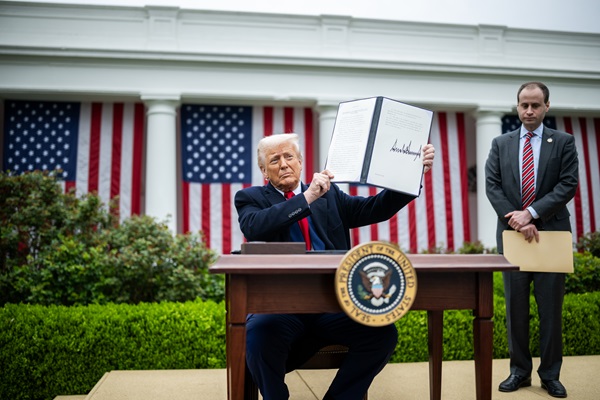.png)

Manoj Rane, who headed treasury at various foreign and domestic banks, was vice chair of FIMMDA and FEDAI. He is now an independent director advising finance firms.
April 17, 2025 at 6:08 AM IST
As the blow-hot-blow-cold tariff strategy continues to roil markets, a closer look reveals a narrative steeped in political spectacle and historical myopia.
At its core, Donald Trump’s tariff war is political theatre—a resurrected campaign pledge to galvanise his base. His first term’s steel import tariffs, which delivered negligible economic gains but significant fallout, underscore a pattern: tariffs rarely achieve the desired results.
History and empirical data have proven: tariffs often worsen economic distress and lead to depression. The 1930 Smoot-Hawley Act, which hiked levies on 20,000 import items to 40-60%, triggered a 65% global trade collapse, halved US exports, and deepened the Great Depression. Trump’s latest tantrum risks a similar downturn.
As is usual, there has been a flood of incredible justifications from expected quarters of his strong support base. One claim is that a recession-inducing ‘shock therapy’ will lower interest rates and help in refinancing debt cheaply.
Another insists tariffs will bring back manufacturing after a period of pain, despite automation causing 80% of US factory job losses since 2000—not offshoring. Manufacturing didn’t flee the US solely because of cheap imports, and if better trade deals were the goal, the US already has ample economic clout and institutions like the WTO to pursue them.
Another hard truth that this theory ignores is the labour arbitrage factor. Reshoring demands trillions and decades—neither addressed in any of the current administration’s rhetoric.
The 90-Day Farce
Tariffs actually serve as nationalist theatre, fulfilling a need for assertion of muscular nationalism by a strong global leader, demonstrated best by Trump’s declaration that “world leaders are kissing my ass”.
Yet the 90-day “pause”—slashing tariffs to 10%—exposes the move’s fragility. Mirroring India’s 2016 demonetisation—which invalidated 86% of currency overnight, costing $50 billion or 1% of GDP over two years—this is damage control disguised as strategy.
The extreme reactions of the market have expedited the pause on tariffs. The recent whiplash—$2.5 trillion market value wiped out in minutes, then a sudden $5 trillion rally—reflects the consequences of unpredictable policymaking.
Where does this end?
Trump’s team is already negotiating exemptions for allies and critical imports, and the administration has said it is open to negotiate with China. After all, 70% of US’ rare earth imports—vital for defence technology—come from China. That chokehold alone could force a full retreat. Tariffs on more than $400 billion of Chinese goods would push US inflation higher—crushing the Fed’s 2% target and disrupting its rate cut cycle.
By the end of these 90 days, US will be able to declare a few token deals—just enough to claim victory and move on. Chances are, the pause will be extended, pushing the entire episode out of public memory. In the interim, we will continue to see the usual quarters provide new justifications and heap praise on the tariff strategy and its success.
As the current Indian government’s 2019 reelection proved, political narratives eclipse economic pain.
India’s demonetisation, first sold as a “black money” purge, later celebrated digital payments when 99.3% of cash returned. Similarly, Trump’s tariffs—initially about “making America great”—now quietly exempt allies and critical imports.
The lesson? Whether India’s D-word or Trump’s T-word, such policies feed on economic amnesia. Trump’s base still believes tariffs “punish China”. In both, supporters found new justifications when original ones failed.
George Santayana’s adage rings truer than ever: those who forget history are doomed to repeat it—or worse, rebrand its failures as triumphs. But remember, when the theatrics end, the bill inevitably comes due.




